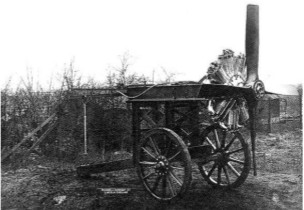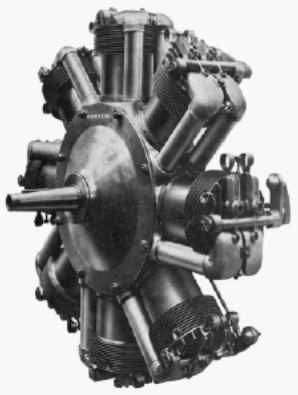Updated: 14-Sep-2023
This is Ruston-Proctor and Co. Ltd. (sometimes Proctor). They received the contract to manufacture the ABC Dragonfly MK1 in the quantity of 1,500 engines, during the 1914-18 war. As the conflict suddenly ended, R-P wasn't able to deliver any of them, Just like the other contractors.
-Ruston was in Lincoln, Sheffield. Apart from the attempt to manufacture the ABC, it made an experimental engine at that time, giving 200 HP and with a “6-stroke” cycle.
-We do not know details at the moment. In 1917 it made the Clerget 9BF engine.

“Ruston-Clerget”
-It seems that when they received the order to manufacture the ABC Dragonfly they already had previous experience in the manufacture of aviation engines.
-This particular engine can be seen at the Turin Polytechnic.
From Appendix 9: This Lincoln City Company, made aircraft engines during the First World War, although its specialty was the construction of steam engines, locomotives and steamrollers.
-During WWI it made the ABC Dragonfly and the rotary radial Clerget both under license.

“A Ruston-Clerget engine on a gun carriage”
-The Clerget was built by Ruston in 1917, of which it made - including the ABC - some 4,000 engines around 1918. It was installed on the Sopwith Camel.
-In a Russian Blog (Shestitaktnyi) we located a photograph of the 6-stroke cycle engine that is mentioned in the main text of this chapter.
-It is surprising to see that its appearance is not the normal one of a rotary engine, with double individual intake duct (?). It is also surprising that it is an 8 cylinder instead of having an odd number of cylinders.

“Ruston-Proctor 6-stroke cycle”
-In the aforementioned blog it is indicated that it gave 300 CV when the author's information insists on 200 CV.
Engines of RUSTON - PROCTOR
Model: 200 HP., experimental
Arquitecture:
Cooling:
Total Displacement:
Bore / Stroke: x
Power:
Weight:
Model: ABC Dragonfly (WWI, Lic.)
Arquitecture:
Cooling:
Total Displacement:
Bore / Stroke: x
Power:
Weight:
Model: Ruston-Clerget 9BF (Lic.)
Arquitecture:
Cooling:
Total Displacement:
Bore / Stroke: x
Power:
Weight:


